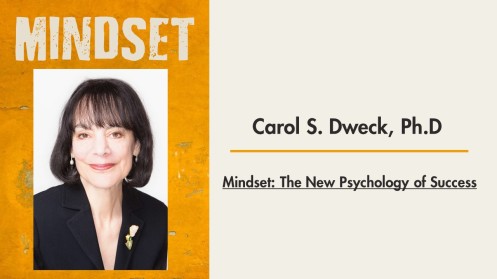One of the best ways to get started with grit, is to teach your students grit terminology and have them assess their own levels of grit. Here are things I do in class to make sure that students are familiar with the GRIT language.
This year (2017-2018), I am approaching a three-prong approach to grit. My students will examine mindset, characteristics of gritty people, and the dimensions of GRIT. Here is the lesson I created using Office Mix to share with my students this year. Below are some things that you can do with your students during and following the lesson.
Step 1: Understanding Mindset

Mindset is “The view you adopt for yourself profoundly affects the way you lead your life. It can determine whether you become the person you want to be and whether you accomplish the things you value.” – Carol S. Dweck, Ph.D
To introduce this idea of mindset, I will complete the following.
- Define mindset, fixed mindset, and growth mindset.
- Have students take the Mindset Quiz
- Have students determine their mindset score
- Assess students’ understanding of the two mindsets with real life scenarios.
Step 2: Understanding the TRAITS of Gritty People

Grit is “Passion and perseverance for very long term goals. Grit is having stamina. Grit is sticking with your future day in, day out, not just for the week, not just for the month, but for years, and working really hard to make that future a reality. Grit is living life like it’s a marathon, not a sprint.” – Angela Duckworth
To introduce the characteristics of gritty people:
- Show Angela Duckworth’s TEDtalk
- Have students take Duckworth’s grit scale assessment and score their grit (1-5)
- Define the characteristics of gritty people: interest, practice, purpose, hope)
- Have students discuss which characteristic best contributes to their grit score.
Step 3: The DIMENSIONS of GRIT

GRIT is your “capacity to dig deep, to do whatever it takes – especially struggle, sacrifice, even suffer – to achieve your most worthy goals.” – Dr. Paul G. Stoltz
- Show Dr. Stoltz’s video with the Grit Video Notes. This can be assigned for homework, but if you watch it in class, the video is less than 8 minutes long.
- Review the video by discussing each component of GRIT and ways that students can develop each component of GRIT. (You can also show a review of the video).
- Have students reflect on which component of GRIT they will work on during the semester. Have a student come up with a plan of how they will grow this particular component of GRIT.
- Have students take a GRIT Video Quiz. If you have a socrative account, you can import my quiz using the following quiz code: SOC-17211854
- If you are an LSC-Tomball employee, your students will take the GRIT gauge. You can also take the grit gauage; print your results and post them in your area for students to see. You can also put your GRIT scores in your email signature line.
- Have students tell a their GRIT story. This is a great “get to know you” activity, but it can be given at any point in the semester. The point of the story is to get students using the GRIT language. Here is My GRIT story.
I appreciate your GRIT story!
LikeLiked by 1 person
Thank you, Shamim! It is nothing in comparison to my students’ stories!
LikeLike
I entered the code, and received an error message. Is there another link or place to go to take the GRIT Gauge?
LikeLike
Ally, are you a LSC-Tomball student or faculty member?
LikeLike